Saltmine Hallstatt

Welcome to Saltmine Hallstatt – a mysterious and enchanting world of ancient mining and underground exploration! Located in the heart of Austria’s Salzkammergut region, Hallstatt is a UNESCO World Heritage Site and a place of immense historical importance.
For centuries, Hallstatt has been renowned for its salt mining industry, with the Hallstatt Saltmine being one of the oldest in the world. In fact, the saltmine dates back to prehistoric times and is said to have been built by Celtic tribes.
April is a great month to combine the Salt mine with other attractions — read our tips here.
Overview of the Saltmine Hallstatt
Today, the Hallstatt Saltmine is a historical and cultural landmark, attracting visitors from all over the world. It has been carefully preserved. Visitors can explore the various levels of the mine. Including the salt-encrusted chambers, the original medieval gallery, and the deep underground chambers. Experience the fascinating history of an ancient salt mine at its best! Carefully preserved throughout the centuries, visitors can explore all levels of the mine. From the salt-encrusted chambers, to the original medieval gallery, to the deep underground chambers. Discover the stories of centuries-old miners and their incredible feats as you explore this unique and remarkable site.
But the saltmine isn’t the only attraction in Hallstatt. As you explore the region, you’ll be able to take in the stunning Alpine views, learn about the culture and history of the area, and explore the many museums and churches.
If you’re looking for a truly memorable experience, then the Saltmine Hallstatt is the perfect place to visit. From the mysterious and enchanting underground chambers to the breathtaking views and historical sites. This is an incredible destination that will leave you with memories to last a lifetime.
So what are you waiting for? Make your way to Saltmine Hallstatt and discover the mysterious and enchanting world of ancient mining and underground exploration!
History of the Saltmine Hallstatt
Prehistoric times
The history of salt mining in Hallstatt, Austria is a tale of ingenuity, creativity, and hard work. Around 7,000 years, the small town of Hallstatt has been the source of some of the world’s most sought-after salt.
The history of salt mining in Hallstatt, Austria, dates back to prehistoric times. The salt mine is one of the oldest known in the world. It is in operation since the Neolithic era – since at least 5000 B.C
That makes Hallstatt the oldest salt mine in the world!
In 400-350B.C flourishing mining activity stopped due to huge landslide – the entire high valley is covered under meters of debris and mud. Only with the exception of the burial grounds that were spared.
Salt mining was then abruptly shifted to a different location.
Middle age
In 1284 they built Rudolf’s Tower to protect salt mining.
In the 14th century, the area was mined for salt by the Celts and Romans, who used the salty liquid to preserve food, as well as for ritual purposes. It was during this period that Hallstatt’s salt was first exported throughout Europe.
Throughout the Middle Ages, Hallstatt became a hub for salt production and trade. It was during this period that the famous “Hallstatt Salz” (salt) was first commercially produced. The product was so popular that it was given as a royal gift to important visitors to the region.
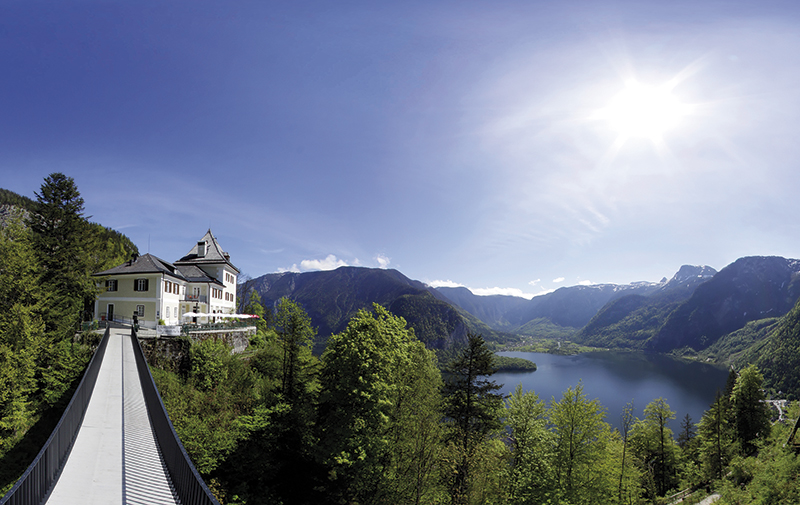
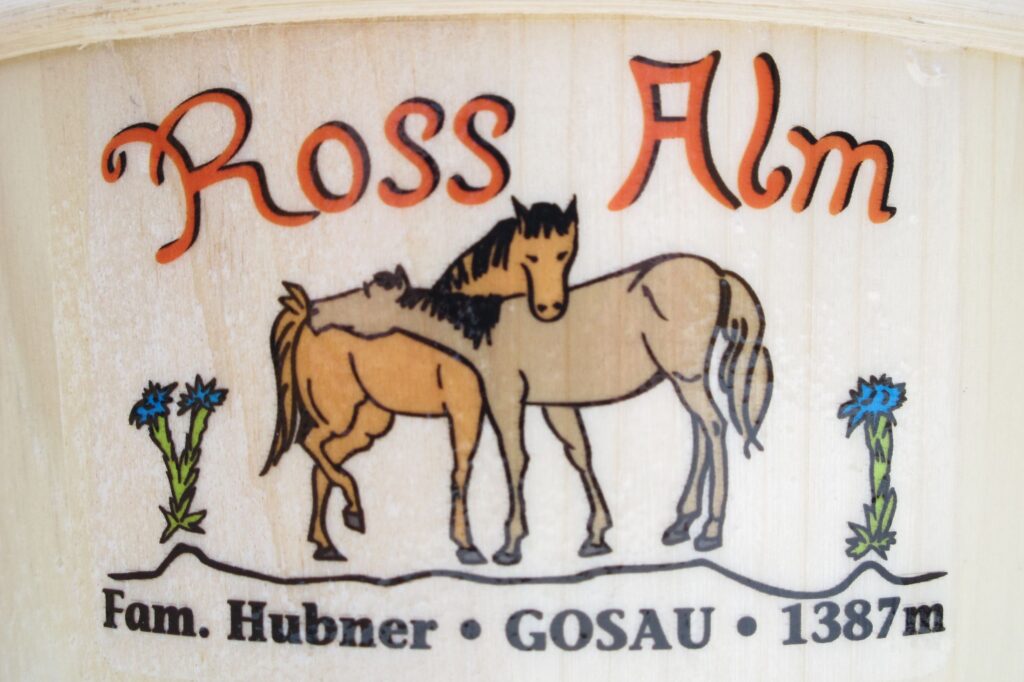
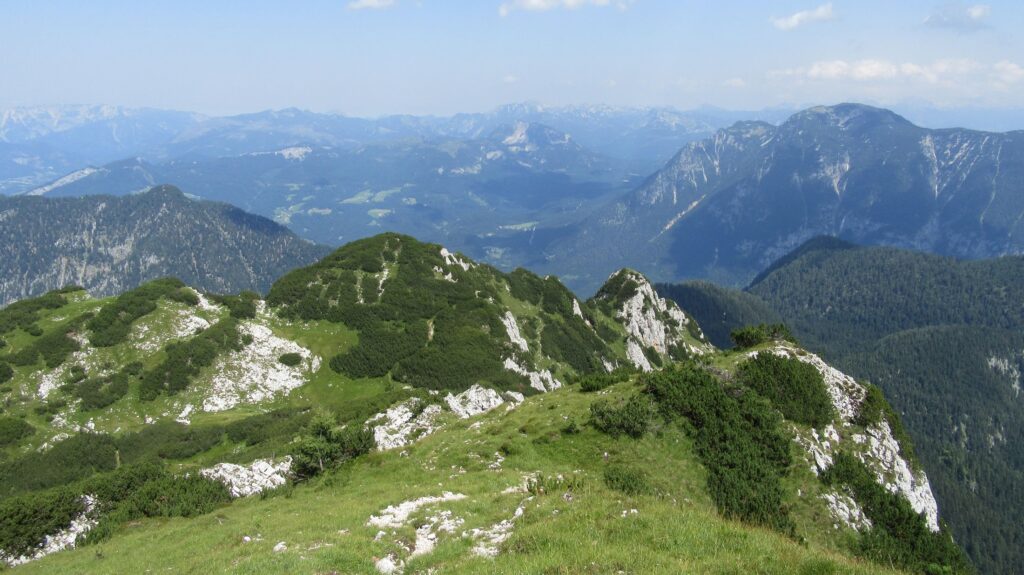
Early Modern Era
In the 16th century, Hallstatt was an important part of the Habsburg Empire, and it was during this time that the town’s salt industry flourished. The salt was used to preserve meats and other food products, as well as to make soap and medicines. The town also became a major trading center, as merchants from all over Europe and beyond sought out the salt produced in Hallstatt.
Man in Salt 1734
In 1734, three miners were stunned to find the corpse of a man in a Hallstatt salt mine. It turned out to be the preserved body of a prehistoric miner. The corpse was so well preserved in salt that its clothing was well preserved and even the skin and hair were still visible.
At first glance, the body was lying under a salt avalanche deep in the mountain where the temperature has been constant all year round at around 8 degrees Celsius for many hundreds of years, while today it would be a first-class archaeological sensation at the time. It was 1734. The terrified miners did not know what to do with a strange corpse in Hallstatt in that at that time there was no road from Salzburg or Vienna, the only more educated person in the mining settlement at that time was the priest of the local church, and he decided to have the mysterious man buried in salt in the consecrated cemetery.
After detailed analysis and research, the man probably lived as early as the 1st millennium BC. It fell victim to a mining accident and lay under the rubble for many hundreds of years. Until it was finally discovered in the 18th century.
19th century
In the 19th century, the Hallstatt salt industry became so successful that it became one of the most important economic activities in the region. During this time, the area saw a massive expansion in salt mining.
The town was soon characterized by its intricate network of underground salt mines, which were connected to the surface by a series of tunnels and shafts.
20th -21st century
At the beginning of the 20th century, more than 300 employees worked here.
Today, the salt produced in Hallstatt is still world-renowned for its quality and flavor. It is exported to more than 20 countries around the world, and is still used in a variety of products, from food and medicines to cosmetics and industrial applications. 40 employees annually produce 605,000 m³ of brine containing 180,000 tons of salt.
How do I get to the salt mine in Hallstatt?
There are two ways to get to the Hallstatt Saltmine once you are in the village. You can hike uphill along the path that old miners used to reach the mines or you can use the Salzbergbahn cable car. Funicular transports you quickly and comfortably to the high Hallstatt valley. The panoramic lift takes you to the observation bridge in a about 5 minutes.
On a nice day I would definitely head up the hill and stop at a few lookouts or shelter along the way. In winter or on rainy days I rather use cable car.
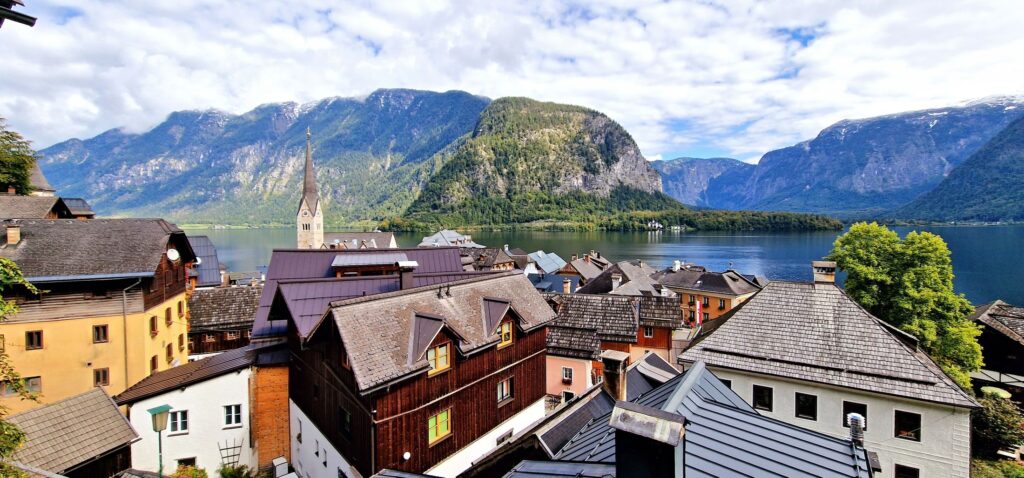
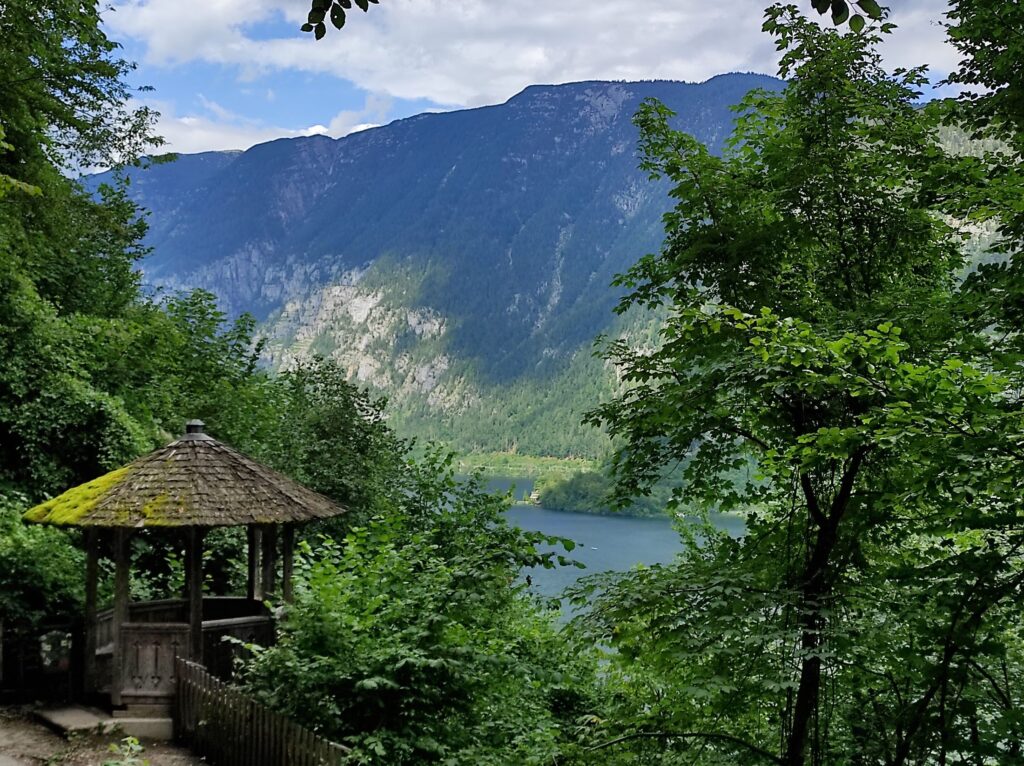
Is Hallstatt saltmine worth visiting
Saltmines or Salzwelten as it is in German is one of the top attractions in the village of Hallstatt. The history itself is linked quite heavily with the salt mining since time immemorial
Salt mine Hallstatt tour guide
Your tour of the Hallstatt Salt Mine starts at the Knappenhaus, the building at the entrance to the mine.
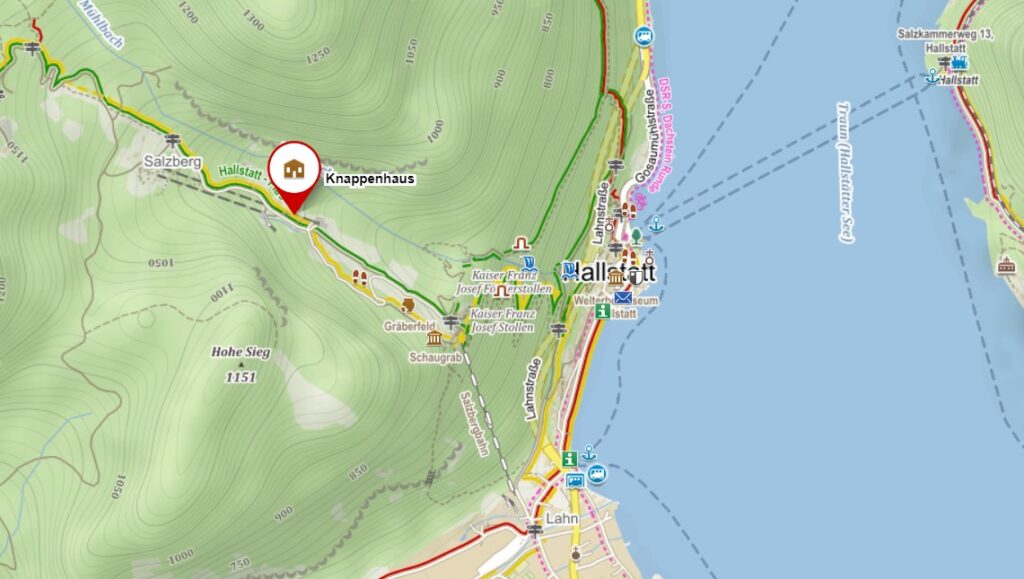
As you enter, your knowledgeable tour guide will already be waiting to take you on an unforgettable journey into the past! Once you are underground, you will cover roughly 2 km on foot. Your tour concludes with a ride out on the mine train.
The first section of the tour will take you through the living quarters of the miners, giving you an insight into their daily lives. You will learn about the history of the salt mine, and discover the secrets of the ancient salt trade.
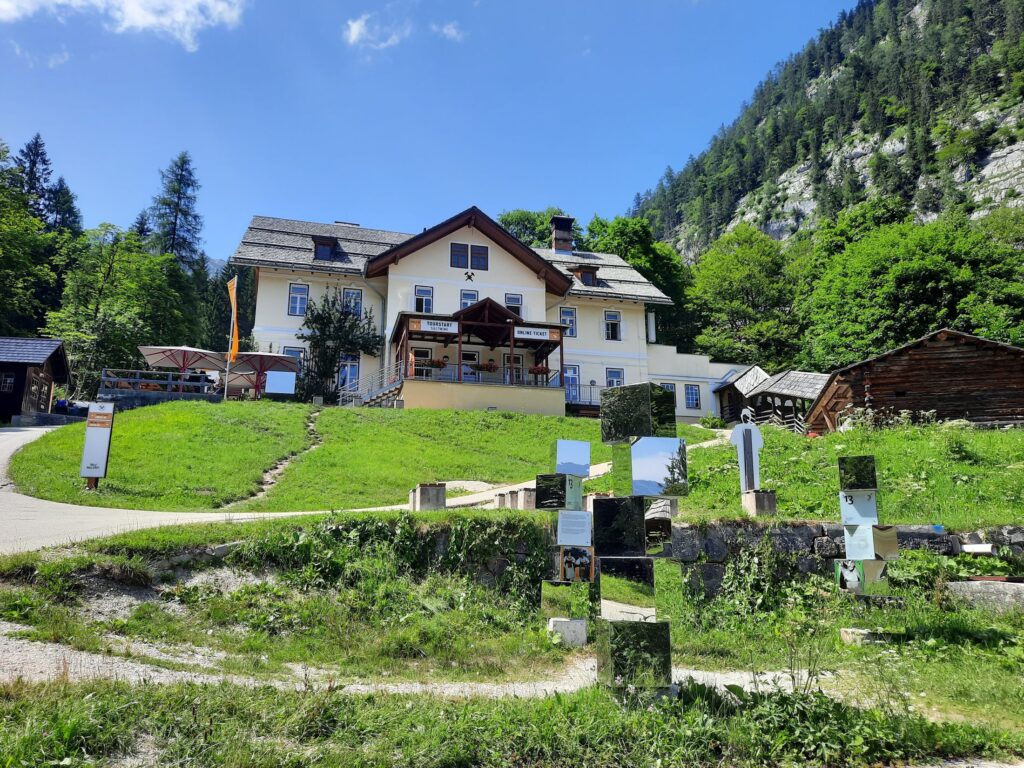
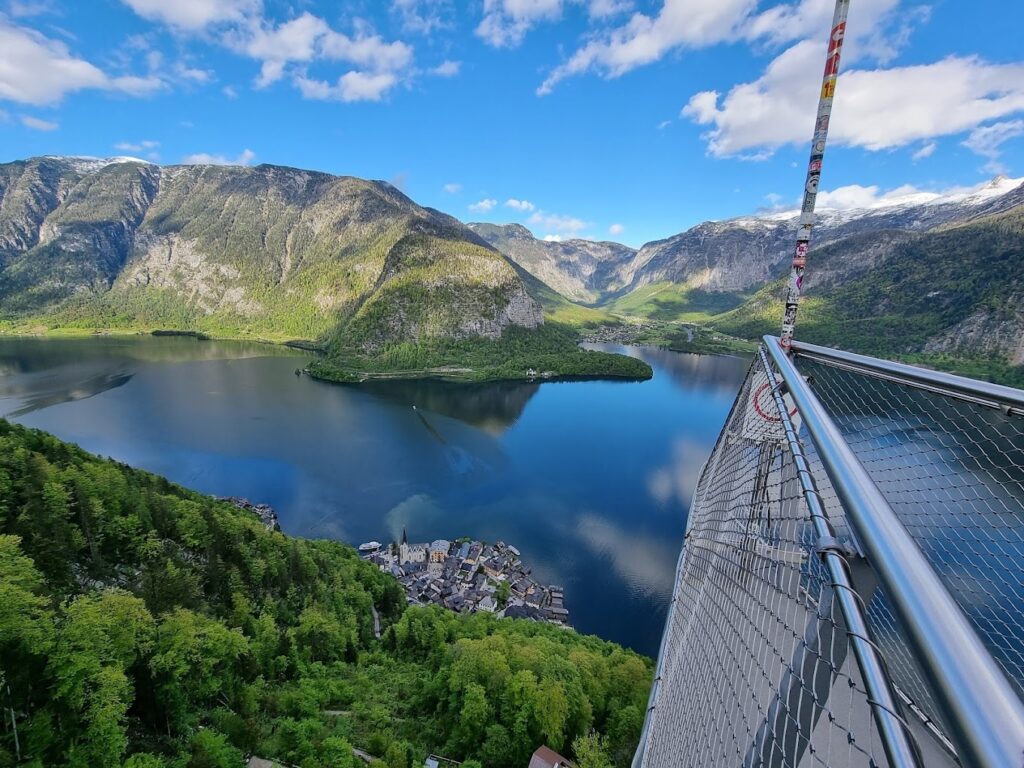
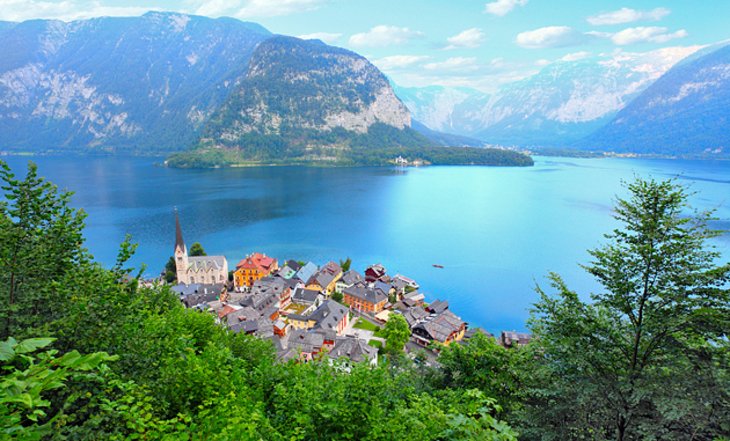
Then follow the footsteps of the miners as you traverse through the mine, exploring the mining operations and storage areas. You will see how the salt is extracted from the rock and used, and marvel at the workmanship of the miners and their machinery.
The tour will then take you further into the depths of the salt mine, where you will be able to experience the unique atmosphere. Here, you will learn about the spiritual and cultural importance of salt, and be able to take a moment to reflect on the incredible feat of human engineering that is the Hallstatt salt mine.
You leave with a greater appreciation for the incredible history of the salt mine and an unforgettable experience. You will also get to take home a souvenir of your amazing tour, as a reminder of your unforgettable journey into the past.
How deep is the salt mine in Hallstatt?
Individuals with basic equipment dug tunnels reaching 200 meters in depth within the mountain, constructing stairways to facilitate the extraction of “white gold” from deep within the mountain. The salt mine has a depth of 200 meters.
How long is Hallstatt saltmine tour?
When visiting the salt mine in Hallstatt, a tour typically lasts around 90 minutes. However, it’s important to keep in mind that the entire visit, including rides on the Salzbergbahn funicular up and down the mountain and a brief hike across the Hallstatt high valey to the entrance building outside the mine, will likely take at least 2 and a half hours.
What is the temperature in saltmine?
The temperature inside the salt mine typically falls between 7 and 10° Celsius. It is necessary to wear a warm jacket and sturdy shoes. We recommend warm jacket and sturdy shoes, even in hot summer there is cold.
Salt mine Hallstatt reviews
I definitely recommend visiting. It’s a great experience. You take the cable car if he doesn’t walk. A view of the town, you will walk further up the hill, there are various habitats along the way. Upstairs, you get a white suit, keep your stuff in the locker room – you’ll need it when you ride down the slide. In the mine, you will walk another part of the way, ride the slide 2x, the train 1x, you will also have a projection. It’s not difficult, only those who have some mobility problems can do it. Price/experience/value is good.
Interesting place and also a tour. When it’s raining outside, it’s the perfect place to spend time in the rain.
You can download a free audio guide to your smartphone, but you need your own headphones. We couldn’t buy them anywhere (we didn’t have our own). The guide speaks German and English alternately.
Great. We liked it a lot. Since it was raining heavily outside, we were happy to hide inside the mine. We took the cogwheel up from Hallstatt, then about 15 minutes of leisurely walking with a wonderful view. There was quite a lot of interest in the mine, it is not a problem to form a nice queue.
What else to see around the salt mine
In the vicinity of the salt mine, don’t forget to visit the World Heritage Skywalk to see the view over the Hallstatt lake. You can jump for refreshments in Rudolph’s Tower or just walk down to Hallstatt through the waterfalls or Echerntal valley back to Market square. Visit the Hallstatt Museum to learn more about Hallstatt area history.

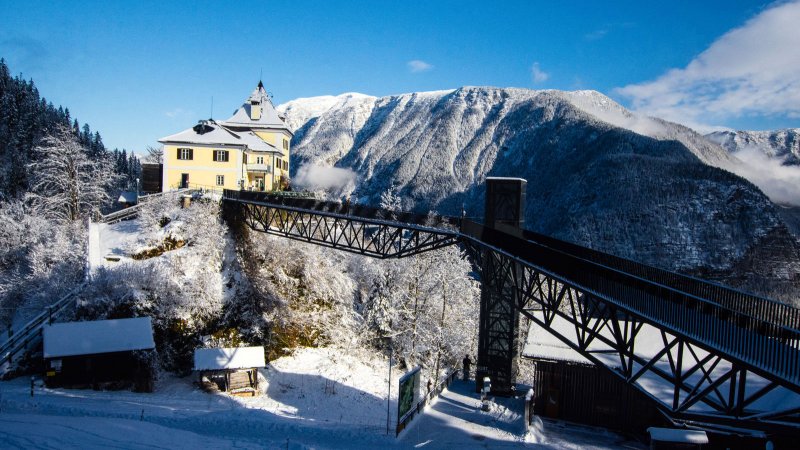
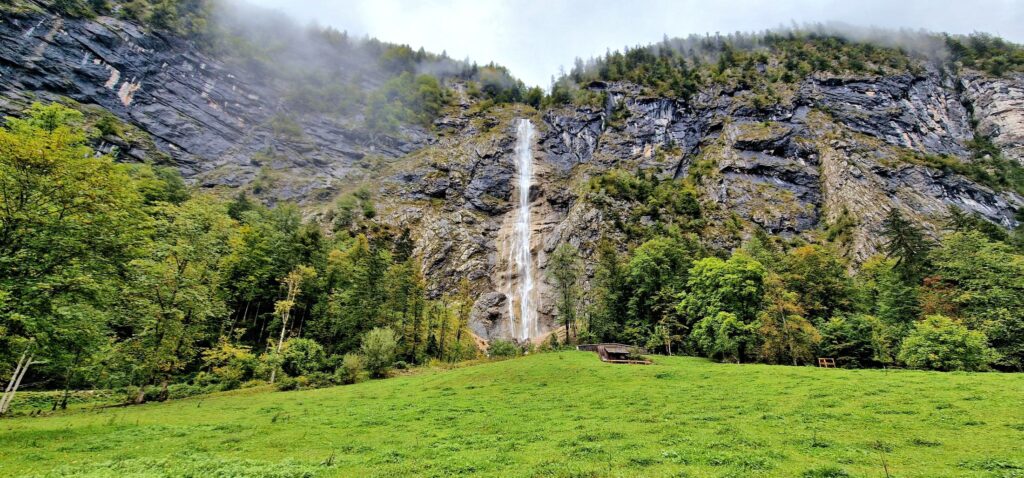
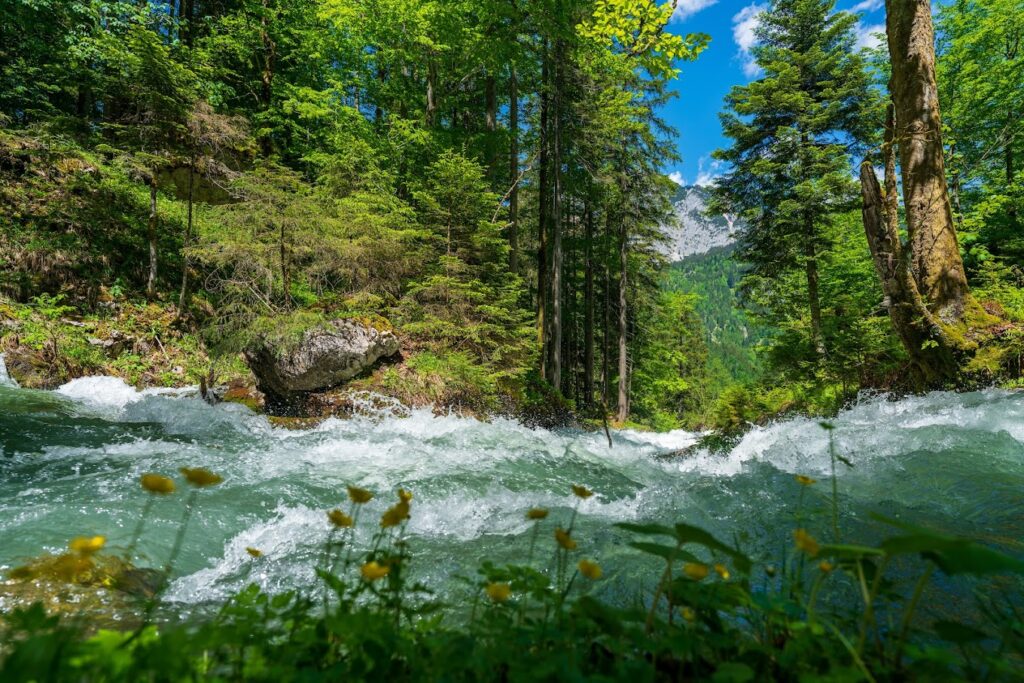
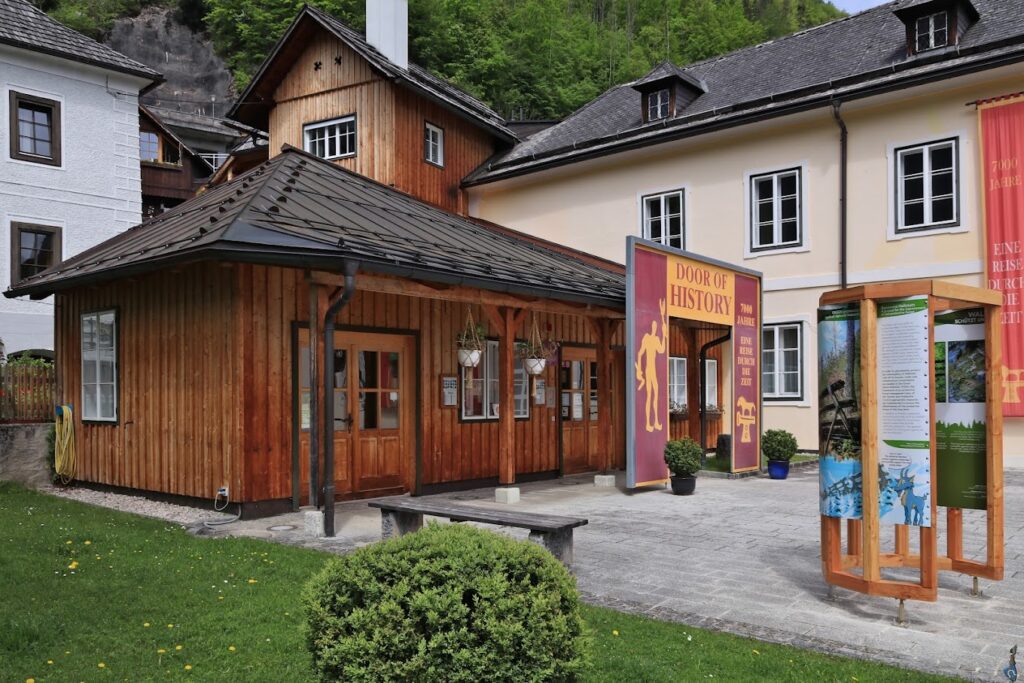
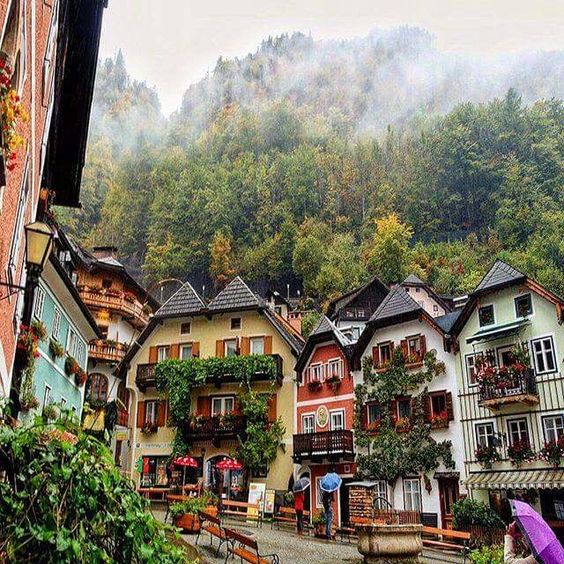
Conclusion
If you’re looking for a more authentic experience, I suggest staying in Obertraun, Bad Aussee or Bad Ischl and visiting Hallstatt early in the morning before the crowds arrive. I come here quite often to experience Hallstatt in different times of the year. See spring Hallstatt, winter Hallstatt or Christmas time in Hallstatt.
For an in-depth look at the Skywalk and its breathtaking views, refer to our comprehensive article